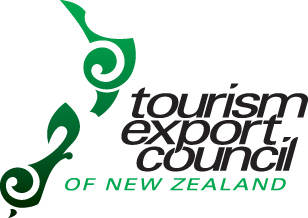NAU MAI – INTERVIEW “Balancing Act”
The most successful Maori businesses have managed to balance the cultural and commercial aspects of their business, these aspects of which are not mutually exclusive. If we look back at those businesses who have focused on one or t’other they have struggled and actually are probably not around today says Tourism Export Council Chief Executive Lesley Immink.
We often hear the Maori mantra ‘culturalising commerce’ we need more of it Lesley says.
We all know that Maori take a long-term view and whether that is about growing a business to employ the whanau or to leave a legacy for the mokopuna or to have an improved quality of life, whatever the aspirations, I have yet to meet a tourism operator Maori or otherwise who wants anything less than to make a profit, preferably considerable profit.
We also know that to achieve our end point we require a certain level of business acumen coupled with a comparative advantage – our Maoriness, inter-woven throughout every aspect of the business to provide that overall point of difference we so often talk about.
Start up operators need to invest in understanding business basics, from gst to domestic/international marketing, product development and pricing.
To do this they need a plan to keep going until the business is self sustaining, which includes membership to the appropriate organizations like the Tourism Export Council and the Tourism Industry Association.
“As a business mentor, when I’m working with couples I say that one of them has to keep their day job until the business can pay them both a realistic wage,” Lesley says.
High profile Māori tourism success stories like Kaikoura Whale Watch, the Tamaki Māori Village, Mitai Māori Village, Te Puia, New Zealand Māori Arts and Crafts Institute, Hell’s Gate, and Te Hana Te Ao Marama are now all sustainable businesses with an export ready product but started one day and one tour at a time, she says.
Lesley, who has affiliations to Tūwharetoa and Ngāti Apa, has 30 years experience in the tourism industry. She has won two New Zealand Tourism Awards, and successfully started, and for 14 years ran, an inbound tour company specialising in the youth and education markets, New Zealand Educational Tours.
The Tourism Export Council (formerly the Inbound Tourism Operators Council) works to bring product suppliers together with New Zealand inbound tour operators to grow New Zealand as an international tourism destination.
Lesley sees having successful Māori tourism experiences as critical to marketing New Zealand as an international tourism destination.
“My vision is for Māori to be a primary motivation for the majority of our overseas visitors. At the moment the key motivator is our stunning scenery, and often it is not until visitors arrive in New Zealand that they appreciate Māori culture as something quite unique and special.
She says changes in the international market place means that her vision is realistic. “The customer is changing. After doing the iconic countries, visitors will turn their attention to countries that are environmentally and culturally sustainable. National tourism organisations like Tourism Australia and Tourism New Zealand are starting to leverage off their indigenous cultures.”
With Tourism New Zealand seeing Māori culture as a point of difference, the next challenge is to make sure that more Māori tourism business operators become export ready, she says.
When developing new tourism products operators need to consider how New Zealand sells itself overseas. Traditionally, the North Island is marketed internationally as Māori, geothermal and citylife products while the South Island is about scenery, nature and conservation.
“Māori operators need to appreciate that while international visitors want to experience Māori product, they don’t necessarily want it at every destination. There needs to be strong differentiation between the range of Māori product for a visitor to experience culture activities in different destinations.”
A change in the market that is creating opportunities for smaller Māori operators is the increase in Free Independent Travellers (FITs).
Where once ITOs needed relationships with 100 key operators to meet the needs of inbound groups, the more diverse requirements of the FITs means that they now need to work with 2000 operators, she says.
To capitalise on this opportunity the Tourism Export Council, working with Air New Zealand, Tourism Auckland, and NZ Māori Tourism, organised an event that brought 20 Māori tourism business and 25 inbound operators together in Auckland in September 2012.
“The event was highly successful. Some Māori operators wrote new business, others established relationships, and others identified that they needed to do more to make their product export ready,” Lesley says. “Inbound operators were pleasantly surprised with the range of new product and keen to learn of more.” Another event is planned for 12 September 2013.
